-
Adopt
-
Veterinary Care
Services
Client Information
- What to Expect – Angell Boston
- Client Rights and Responsibilities
- Payments / Financial Assistance
- Pharmacy
- Client Policies
- Our Doctors
- Grief Support / Counseling
- Directions and Parking
- Helpful “How-to” Pet Care
Online Payments
Referrals
- Referral Forms/Contact
- Direct Connect
- Referring Veterinarian Portal
- Clinical Articles
- Partners in Care Newsletter
CE, Internships & Alumni Info
CE Seminar Schedule
Emergency: Boston
Emergency: Waltham
Poison Control Hotline
-
Programs & Resources
- Careers
-
Donate Now
Depending on where you live, the winter months generally mean cold temperatures and snow on the ground. You know how to keep yourself warm and content in this weather, but what about caring for your dog? Even in extreme temperatures, it’s important to keep your dog mentally and physically active – and be safe doing it! We spoke with Dr. Jake Stokes in Primary Care at the MSPCA-Angell about ways to ensure your four-footed friend stays safe and cozy throughout the winter season – and not just a couch potato (albeit a snuggly one).
Brr…It’s Cold!
Exactly how cold is too cold for a dog? “I feel like it’s a hard question just to give one answer because it’s going to differ,” said Dr. Stokes. “One temperature that feels comfortable for one dog will be very cold for another dog.”
How a dog tolerates cold weather is based on a few different things, including:
Coat type and color
“Breeds like Huskies, Samoyeds, Newfoundlands – they have thick double coats, and they’re bred to do well in the winter,” explained Dr. Stokes.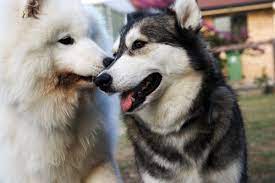 “They’re going to be able to tolerate temperatures much lower than some of the short, thin-coat breeds, like a French bulldog or a Basenji.” The color of a dog’s coat also affects how a dog adjusts to the cold. “Darker coats tend to absorb more sunlight,” said Dr. Stokes.
“They’re going to be able to tolerate temperatures much lower than some of the short, thin-coat breeds, like a French bulldog or a Basenji.” The color of a dog’s coat also affects how a dog adjusts to the cold. “Darker coats tend to absorb more sunlight,” said Dr. Stokes.
Size and weight
Smaller dogs, like toy breeds, will get cold faster than bigger dogs. “Small dogs have a bigger surface area to volume ratio,” said Dr. Stokes. “They lose more heat compared to how much heat they keep in.” A dog’s weight also affects how it tolerates the cold. Thinner dogs generally get cold faster than heavy dogs – but this doesn’t mean you should purposely make your dog fat for the winter!
Age and overall health
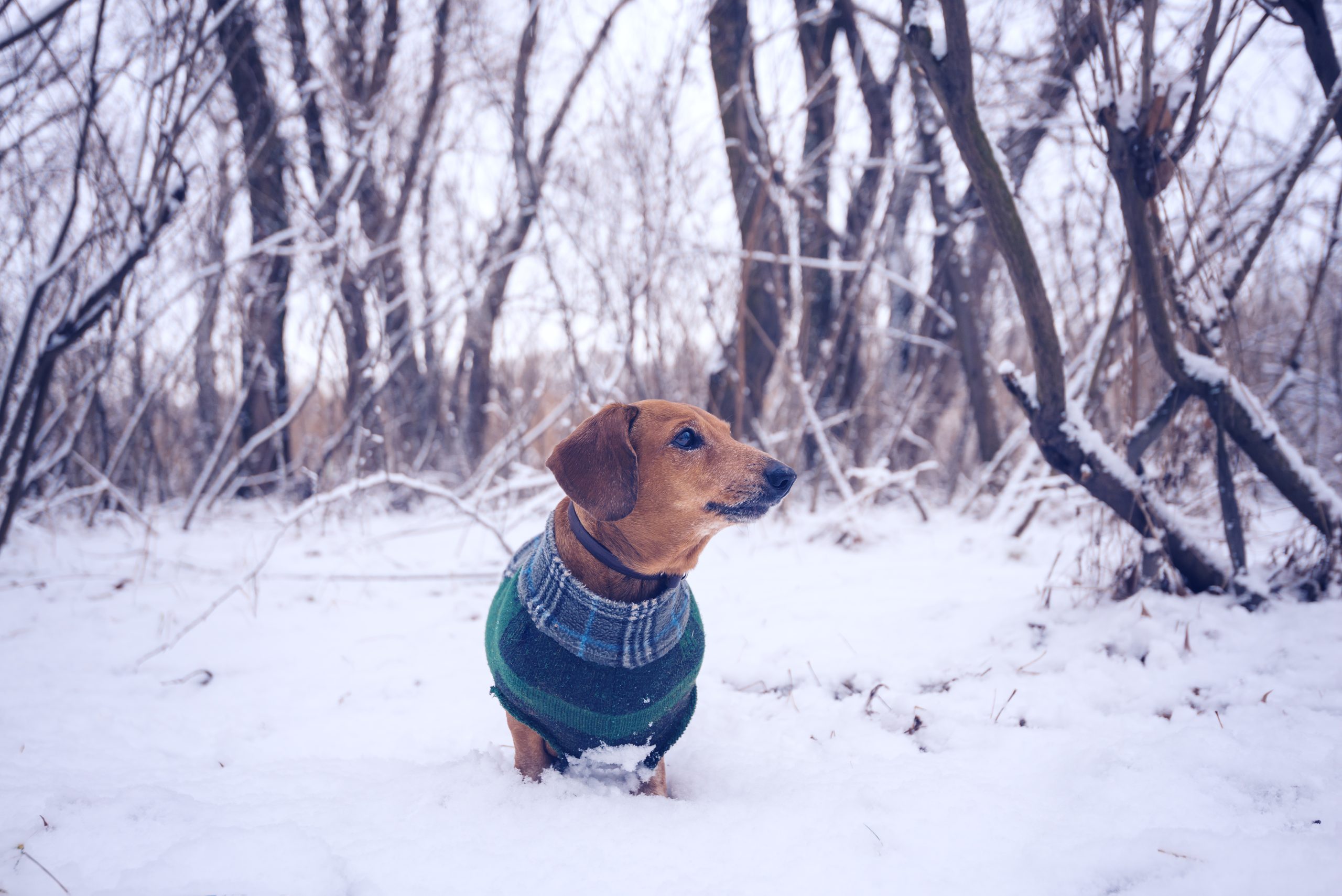 Even though puppies are generally healthy, being young can sometimes affect a dog’s cold tolerance; puppies can’t regulate their body temperature during the first four months of life. “Older dogs and dogs with weaker immune systems might not be able to generate or retain body heat compared to healthy dogs,” added Dr. Stokes.
Even though puppies are generally healthy, being young can sometimes affect a dog’s cold tolerance; puppies can’t regulate their body temperature during the first four months of life. “Older dogs and dogs with weaker immune systems might not be able to generate or retain body heat compared to healthy dogs,” added Dr. Stokes.
But what’s considered a “cold” temperature? “You must be cautious when the temperature falls below 32 degrees,” said Dr. Stokes. “And when it drops below 20 degrees, the potential for frostbite and hypothermia really set in if a dog’s been outside for a long time.” Dr. Stokes added that even 25 to 30 minutes in freezing weather could affect limbs and tails, especially if the dog is older, predisposed to specific health conditions, or a small dog with a thin hair coat. To help these dogs to stay warm, Dr. Stokes suggests a coat or jacket. “Especially for the smaller, skinny dogs – a coat, a sweater, even boots, if they tolerate it,” he said. “All those things will help trap in their body heat and keep them warmer longer.”
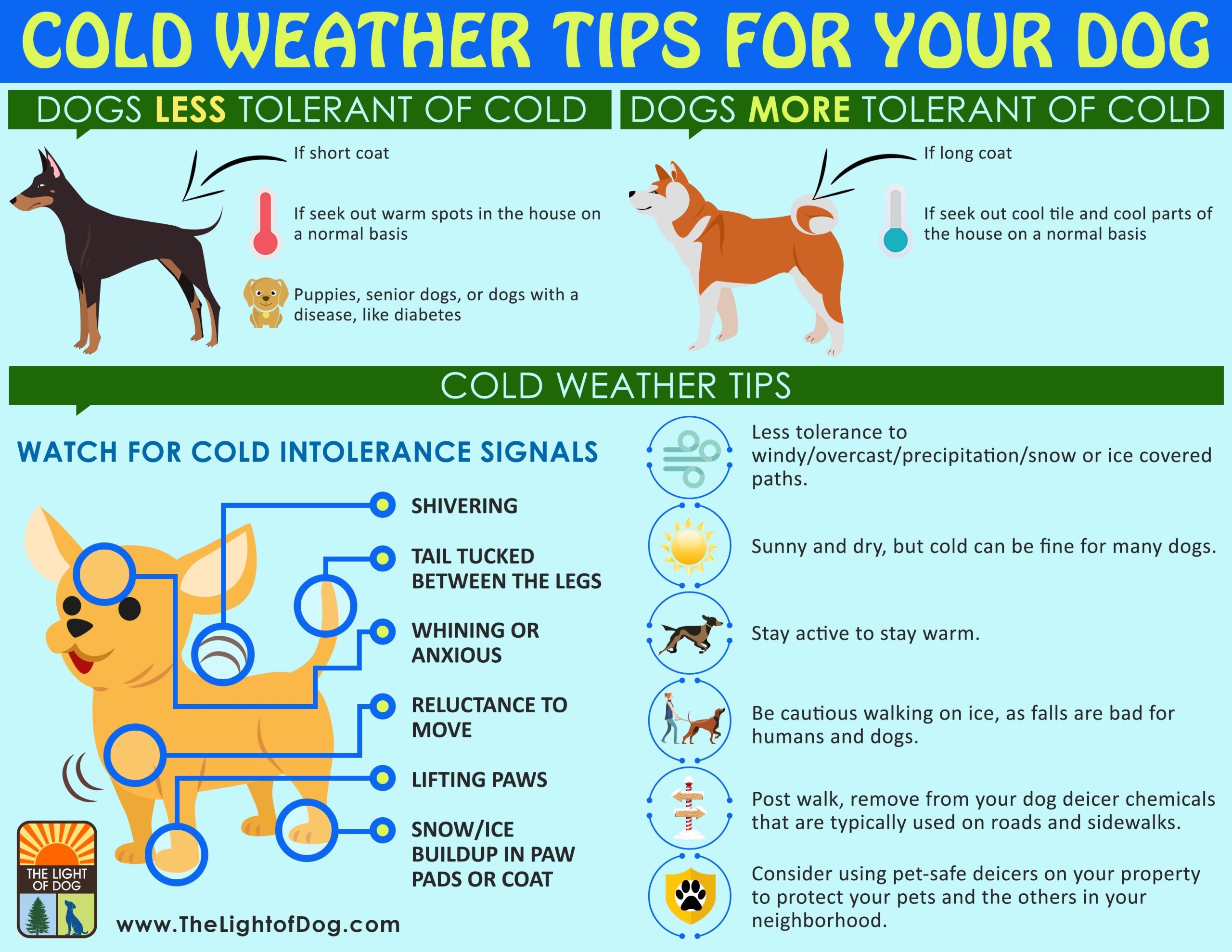
Image courtesy of TheLightofDog.com
Dog Paw Health and Protection
Boots and booties aren’t only essential because of the cold and snow, but if you walk your dog on sidewalks or streets, you’ll probably encounter ice-melting products like rock salt. Depending on your dog’s health, the snow and cold can dry out their paws and cause them to crack. And then, combined with the rock salt, your dog’s feet can suffer – granules can get caught between toes and into the broken skin, causing his paws to burn (literally rubbing salt in his wounds).
“The problem is that not every dog will tolerate boots,” said Dr. Stokes. “But like most things, training your dog to get used to them will help.”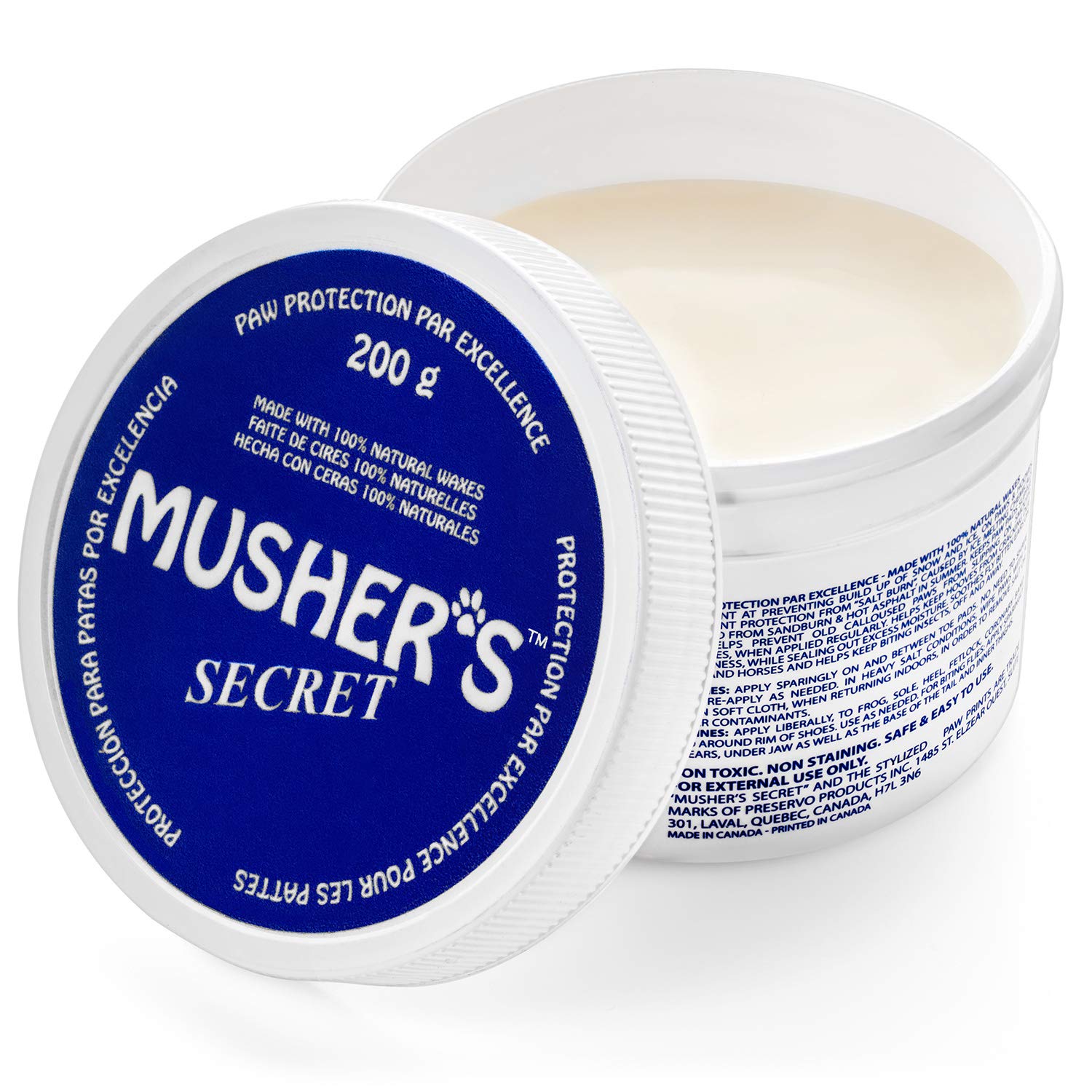 He suggests putting the boots on your dog inside first and giving high-value treats to get them comfortable wearing them. “It’s the best way to keep their feet protected outside,” added Dr. Stokes. But if your dog just won’t put up with boots on their paws, Dr. Stokes suggests less invasive protection options like the barrier wax Musher’s Secret or even Vaseline. “It’ll keep their paw pads hydrated and create a barrier that prevents snow, ice, and salt from irritating their feet,” he explained.
He suggests putting the boots on your dog inside first and giving high-value treats to get them comfortable wearing them. “It’s the best way to keep their feet protected outside,” added Dr. Stokes. But if your dog just won’t put up with boots on their paws, Dr. Stokes suggests less invasive protection options like the barrier wax Musher’s Secret or even Vaseline. “It’ll keep their paw pads hydrated and create a barrier that prevents snow, ice, and salt from irritating their feet,” he explained.
Symptoms of Hypothermia in Dogs
In dogs, hypothermia sets in when their temperature falls below 95 degrees. (Normally, a dog’s temperature is around 101 to 102.5 degrees Fahrenheit.)
If it’s very cold, you likely won’t be outside for too long with your dog. However, if something happens and your dog ends up in the cold for a while – or you happen to find another dog stranded in the cold – there is the chance of hypothermia setting in after a bit. Several factors should be considered when determining how cold is too cold for your dog. And there are tell-tale signs when the cold is too much for your pup.
“You’ll notice some obvious things like your dog shivering and curling up for warmth,” said Dr. Stokes. “They’ll probably become a little anxious or restless – or maybe even vocal, like whining and crying.” Other symptoms include general lethargy, paleness of extremities, and dilated pupils. “Paw pads, toes, and tails are the most susceptible parts of the body to watch out for in you’re concerned about hypothermia,” added Dr. Stokes.
Another huge sign is a dog’s respiratory and heart rate. A dog in distress due to hypothermia will start to breathe quickly and pant at first due to anxiety and uncomfortableness. Once hypothermia begins to set in, you’ll notice the dog’s respiratory rate slowing and hear more shallow breathing.
 Dr. Stokes suggests checking your dog’s pulse by placing your hand on the side aspect of his chest until you feel the dog’s heart beating. From there, count the number of heartbeats in 15 seconds. Multiply that number by four, and you’ll get the dog’s heartbeats per minute. “A healthy dog’s pulse should be anywhere from 60 to 140 per minute,” explained Dr. Stokes. “But if you’re concerned about hypothermia and realize that it was very fast and now it’s slowing down, that could be an early sign of hypothermia.”
Dr. Stokes suggests checking your dog’s pulse by placing your hand on the side aspect of his chest until you feel the dog’s heart beating. From there, count the number of heartbeats in 15 seconds. Multiply that number by four, and you’ll get the dog’s heartbeats per minute. “A healthy dog’s pulse should be anywhere from 60 to 140 per minute,” explained Dr. Stokes. “But if you’re concerned about hypothermia and realize that it was very fast and now it’s slowing down, that could be an early sign of hypothermia.”
If you find your dog is indeed suffering from hypothermia, you should first get your dog inside where it’s warm. “The key word is warm, not hot,” said Dr. Stokes. “Dogs with hypothermia need to be rewarmed in a gradual process.” Wrap your dog in warm blankets and towels, but do not use heated devices like a heating pad – the excessive heat can burn your pup and lead to more shock. Lastly, find the nearest urgent care or emergency animal hospital so your dog can be seen and monitored by health professionals.
Winter Exercise for Your Dog
As much as we’d like to, we can’t all sit around the house during the winter – especially if we’re dog owners. Walking your dog in the snow and cold can sometimes be a chore, especially when the temperature is in the negative degrees and the weather is brutal. But your dog needs fresh air, exercise, and bonding time with you to keep him happy and healthy.
Walking your dog in the winter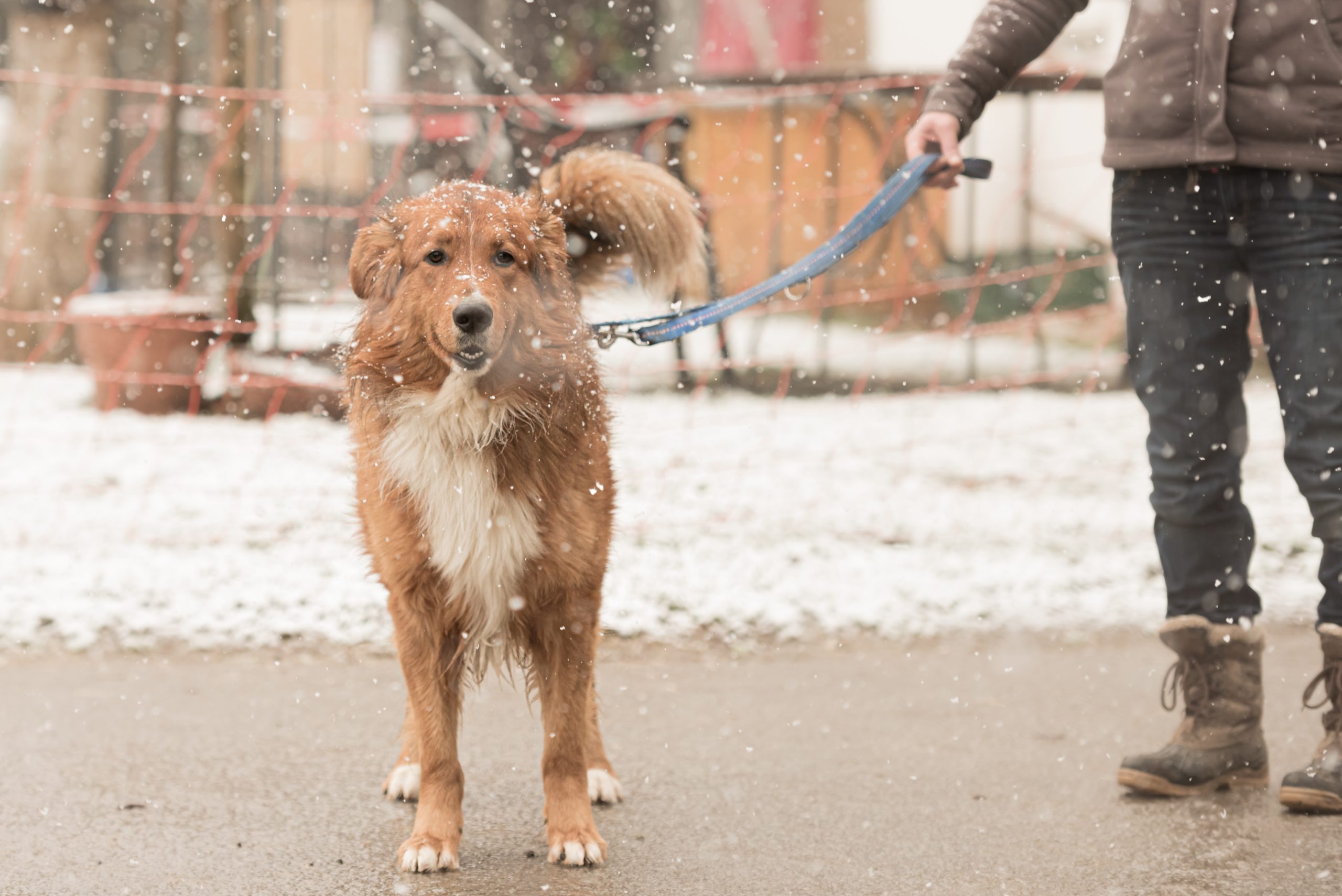
The key to keeping everyone happy (and safe) is how much time you spend outside. Again, it all depends on the type of dog you own – a tiny miniature pinscher will have an entirely different outlook on winter wonderland than a Bernese mountain dog. “Minimizing your time outside is a good idea, especially when the weather is bad,” said Dr. Stokes. And pay attention to how your dog reacts to the weather and cold. Maybe he needs to wear a sweater for his afternoon outing. Is he hesitating even to put one paw outside the door? Perhaps the walk can wait! “Walks up to a half hour are fine if the weather is above freezing,” said Dr. Stokes. So, if it’s the thermometer is in the negatives, it’s best to let the dog outside to do his business and get him back in the house as soon as possible.
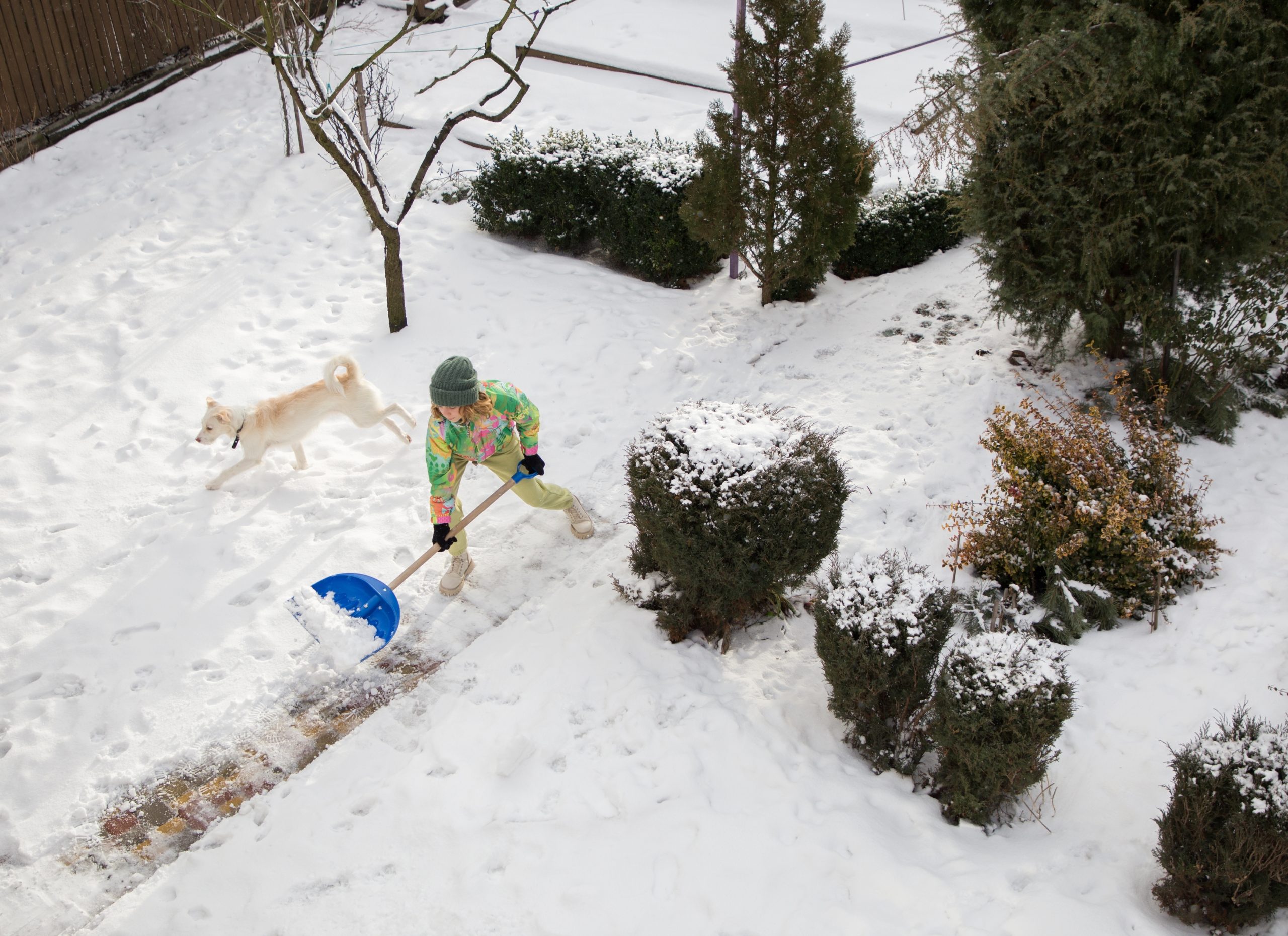 When it comes to winter walking, it’s a good idea to plan a safe route. Dr. Stokes suggests scoping out the route and terrain before going for a walk. “If you go on a specific street every time you walk your dog, but you notice that it’s particularly icy and jagged areas of the ice, or there’s a lot of that rock salt, then just avoid that street.” Or, if the conditions look okay, Dr. Stokes suggests the dog wear boots or make sure to wipe their paws off when they get home to avoid significant trauma to their paw pads. Hopefully, the walks in your neighborhood are well-maintained, but if they aren’t, sometimes it’s just best for you and your pup to make your own path (most dogs enjoy tromping through the snow if it’s not too deep).
When it comes to winter walking, it’s a good idea to plan a safe route. Dr. Stokes suggests scoping out the route and terrain before going for a walk. “If you go on a specific street every time you walk your dog, but you notice that it’s particularly icy and jagged areas of the ice, or there’s a lot of that rock salt, then just avoid that street.” Or, if the conditions look okay, Dr. Stokes suggests the dog wear boots or make sure to wipe their paws off when they get home to avoid significant trauma to their paw pads. Hopefully, the walks in your neighborhood are well-maintained, but if they aren’t, sometimes it’s just best for you and your pup to make your own path (most dogs enjoy tromping through the snow if it’s not too deep).
Suppose you don’t walk your dog and let your pup run around in the backyard. In that case, Dr. Stokes suggests shoveling a pathway for your dog to help make things a bit easier for him to navigate in the snow. “If your dog goes out in the backyard and has one specific corner where they always do their business, shovel a pathway to that area, so they’re familiar with it — and then try and shovel it down to the grass as much as possible,” he said.
Indoor Winter Exercise for Your Dog
Sometimes, the weather is so awful that going outside is not an option. When your dog needs to burn off energy, it’s time to turn to alternative ways to exercise your pup indoors. Not every dog will be motivated enough to do it, but simple games like fetch and tug of war are good things to quickly get your dog’s heart rate going and keep them mentally stimulated.
Below are some indoor solutions to keep your dog physically and mentally stimulated when it’s too cold to go outside.
Scavenger hunt with treats
This game involves a lot of nose work for your dog. Hide pieces of his favorite treat around the house – this area could be limited to just one room, or you can utilize the entire floor. Try not to overfeed your dog, so it’s best to hide pieces instead of individual treats.
Treat-dispensing balls and puzzle toys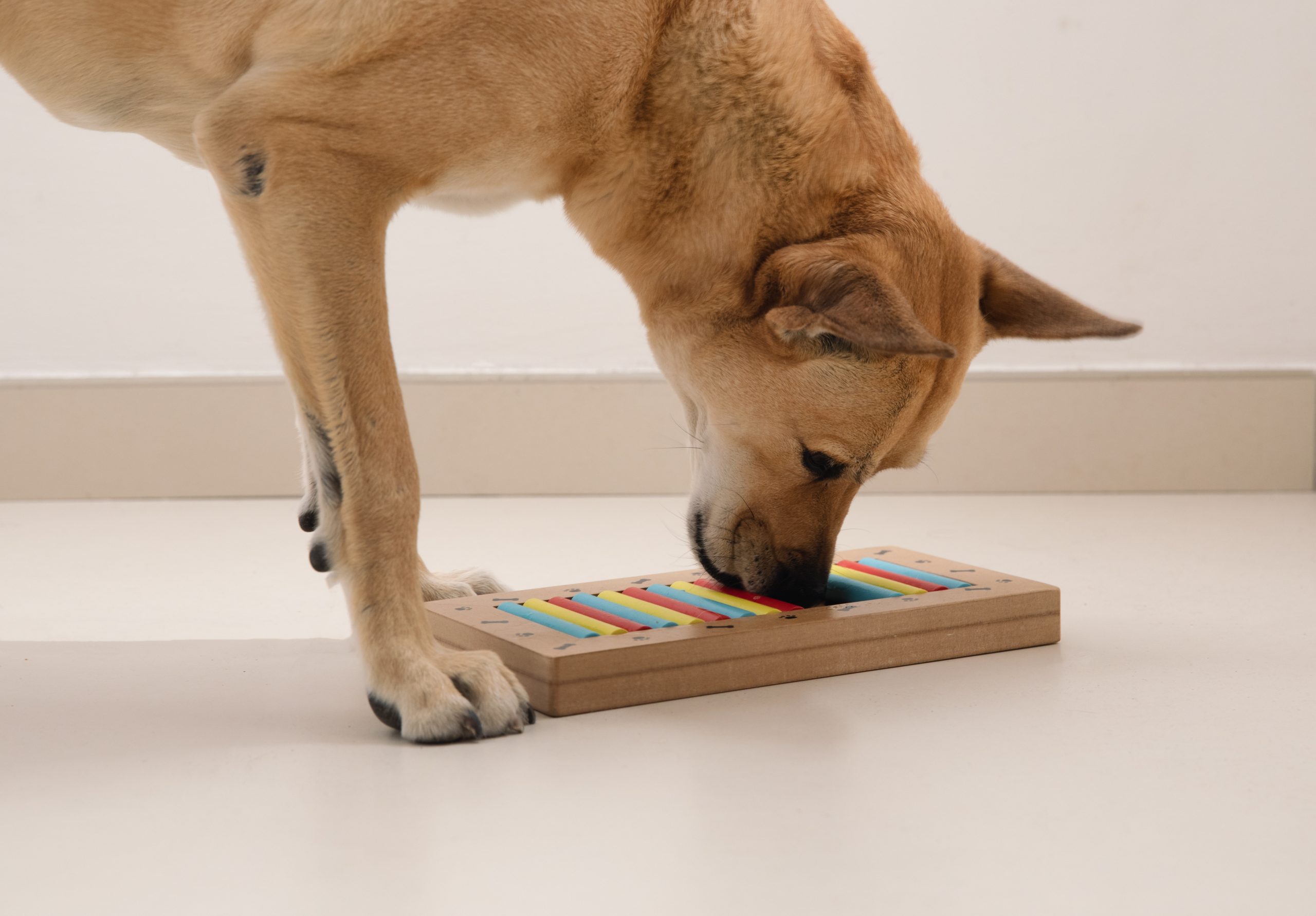
There are a ton of interactive puzzle toys on the market that offer much-needed mental stimulation for your cooped-up dog. Again, over-feeding can become a problem with these, so try to use minimal treats.
Laser pointers
Some dogs enjoy chasing after the laser pointer dot; the randomness of the light triggers a dog’s prey drive. However, you must be careful with the pointer because you can damage your dog’s eyes if you point the light directly at them. And in some dogs, the distraction of the laser point light creates more chaos than good. If your dog enjoys the laser pointer, use the device sparingly.
Hide and seek
This game is a great way to work your dog’s brain and nose and get him moving. It’s similar to how you play with your human buddies: hide in the room and let your dog seek you out. It also helps to hold a high-value treat in your hand while you’re hiding!
Obstacle course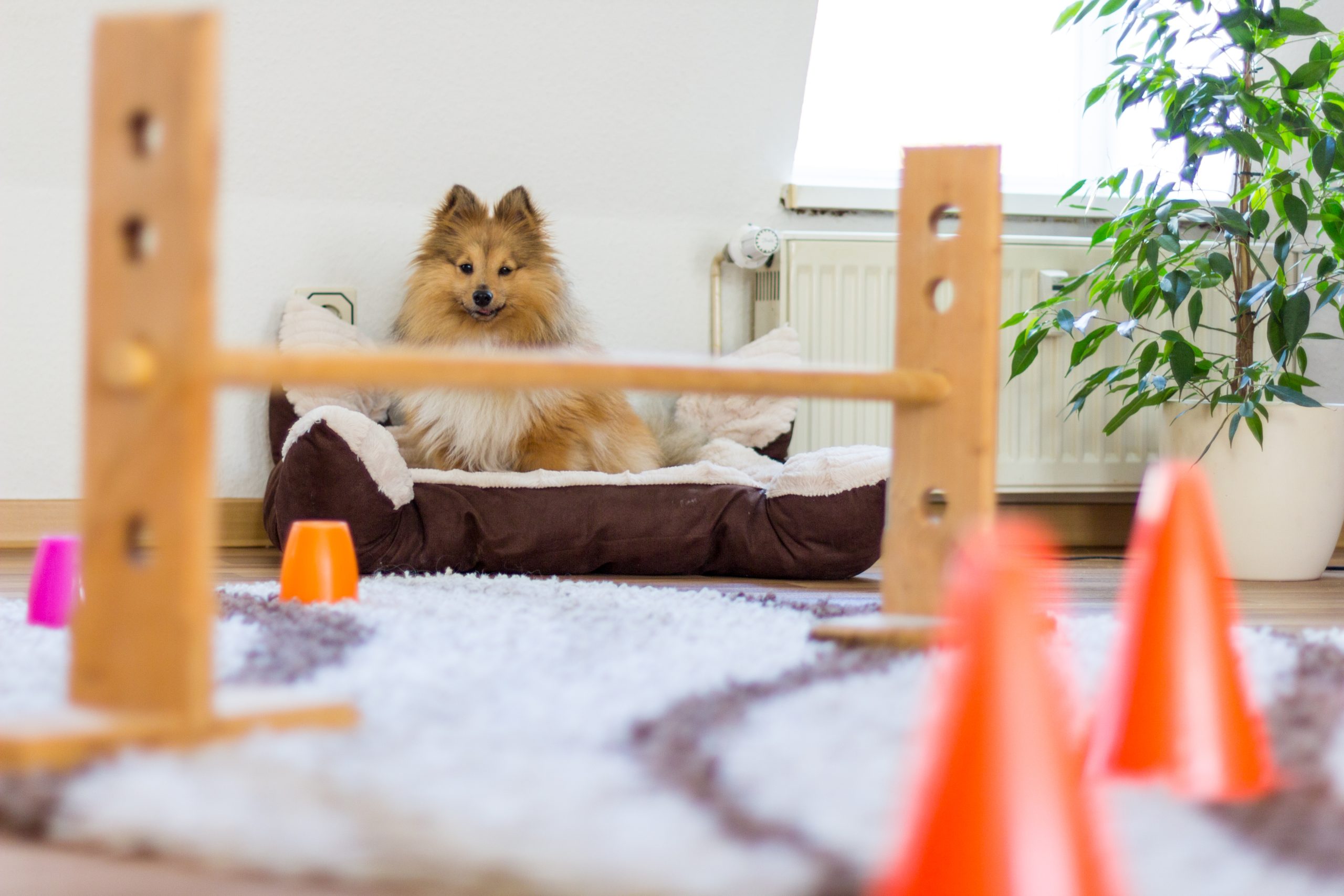
This activity is excellent for dogs who love agility classes. Use chairs, blankets, pillows, and other items around the house to create jumps, tunnels, and other obstacles for your dog to run over, through, or around. (Of course, please keep safety in mind when building these obstacles.)
Chasing each other
A simple activity but always a lot of fun – and it’ll wear out your dog fast. Plus, it strengthens your bond with your dog because it’s a game you play together. Just be careful that your dog realizes it’s a game – keep the chasing light and fun, and don’t get too aggressive. And, of course, avoid any potentially dangerous items that either of you could trip on, causing you to fall.
Doggie daycare
Sometimes your dog needs to be around other dogs to socialize and burn off his cooped-up winter energy. If you don’t have a doggie daycare near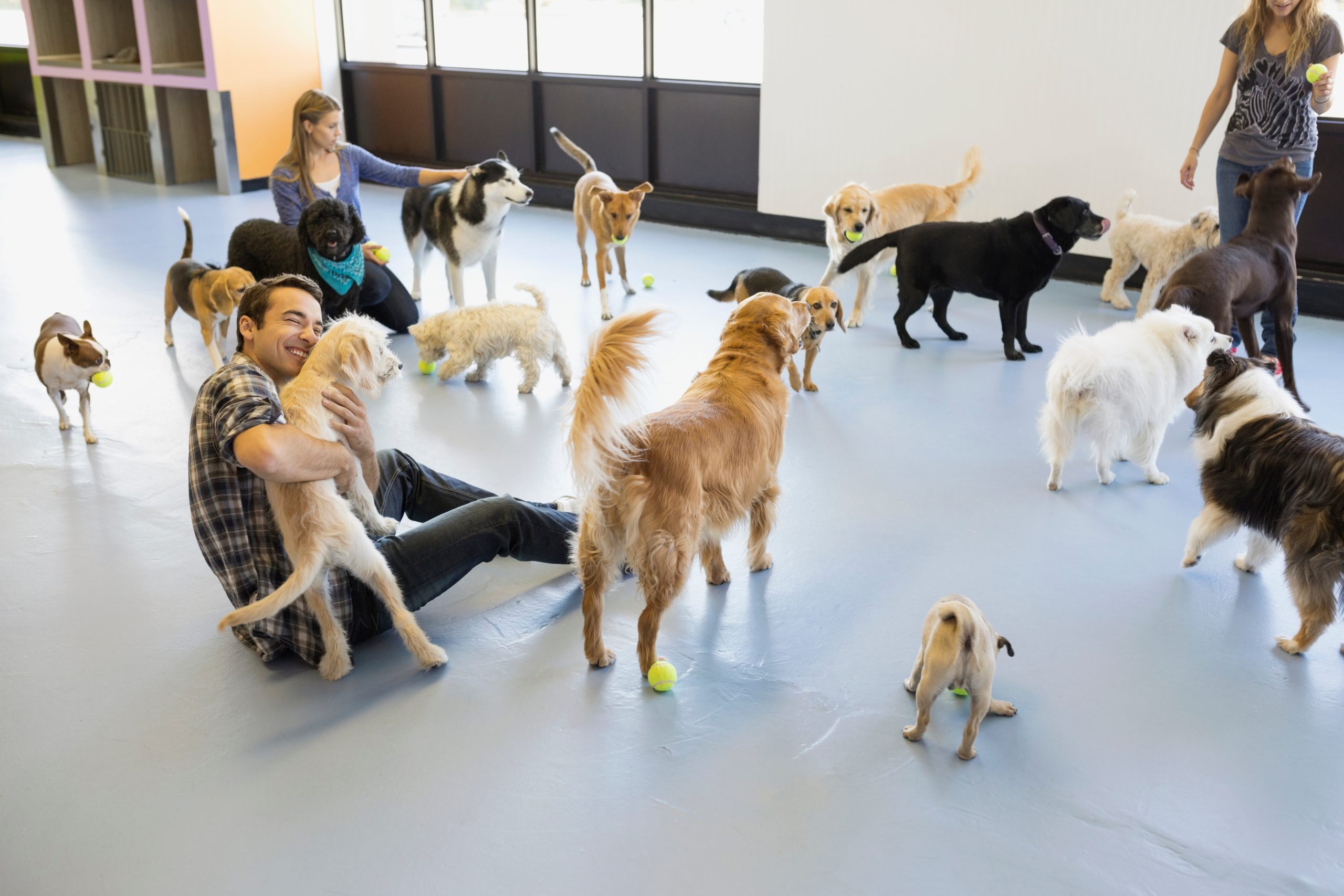 you, maybe invite other dog moms and dads for a playdate. You can get to catch up with your friends while your dogs have the chance to hang out with theirs. It’s a win for everyone in the family!
you, maybe invite other dog moms and dads for a playdate. You can get to catch up with your friends while your dogs have the chance to hang out with theirs. It’s a win for everyone in the family!
For additional cold-weather boredom buster ideas, check out these tips from the MSPCA-Angell’s Dr. Terri Bright, Director of Behavior Services.



